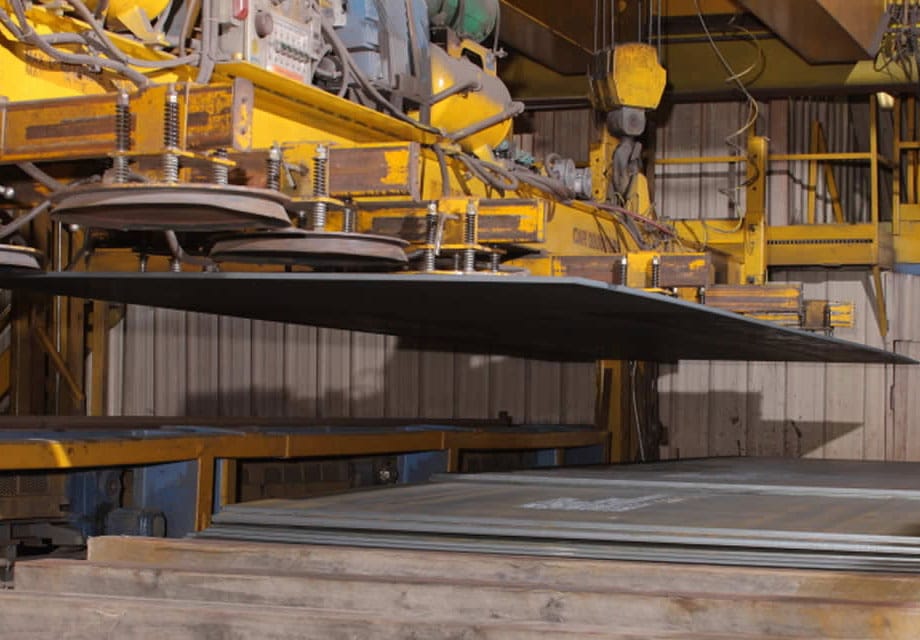The Steel Tank Institute (STI) is a recognized R&D organization for underground and aboveground storage tanks. Tanks built to STI standards are widely installed throughout Canada and appropriately meet ULC listings and regulatory codes. STI has now developed a standard for a state-of-the-art oil-water separator conforming to ULC-S656 “Standard for Oil Water Separators”.
The STI specification is the AquaSweep™ Gravity Oil Water Separator and is designed for gravity removal of non-emulsified hydrocarbon lightweight oils with a specific gravity of less than 0.95 and related petroleum products from storm water runoff. Sizes are available from 1,325 to 190,000 liters (350 – 50,000 gallons) with flow-through rates from 125 to 37,850 liters per minute (33 – 10,000 gallons per minute). The AquaSweep standard includes five (5) different models to provide a high degree of application functionality.
In addition to traditional oil-water separators which use parallel plates of corrugated galvanized steel to separate oil from water, the AquaSweep technology also incorporates oleophalic coalescers which attract oil. The result is a much higher separation efficiency – less than 5 parts per million (ppm) for certain models. Of course, efficiency is a function of several factors, especially the influent oil concentration. ULC-S656 currently requires oil-water separators to be tested with an influent oil concentration of 2,000 ppm compared to the 200 ppm established within the UL 2215 standard in the United States. Accordingly, the AquaSweep Model 3 tested to ULC-S656 has a rated efficiency of 15 ppm (15 mg/L). The five models tested to UL 2215 are rated for 5-10 ppm effluent.
The five AquaSweep models employ various arrangements of coalescer materials, panels and plates. Selection of the correct separator size and model requires knowledge of the oil-contaminated wastewater mixture and proper design review by the responsible engineer. Among the considerations:
- Maximum inflow rate
- Required oil removal efficiency
- Specific gravity of incoming oils
- Maximum incoming oil concentration
- Operating temperature
STI is developing a software program to help design specifiers determine the correct model depending on the above and other considerations.
All AquaSweep models incorporate an internal diffusion panel which reduces turbulence and flow, allowing lightweight oil to collect and rise within the tank where it can be further processed or discarded into the wastewater system. Oil storage capacity is 40 percent of tank volume. Liquid level sensors and control panels are available to sense the oil level within the tank and alert the operator when the oil needs to be removed. Heavier suspended solids (sludge) separate and are collected in a settling chamber for efficient removal while a sludge baffle prevents solids from entering the outlet pipe.
Typical applications are at bulk oil terminals, oil transfer areas, vehicle maintenance areas, fueling facilities, parking lots and machine shops. Oil-water separators are intended to collect and separate free oil from water; they do not remove the soluble fraction of oil in the water. AquaSweep is not intended for use with compounds such as antifreeze, degreasers, alcohols, gasoline, solvents, detergents, dissolved solids and emulsified oils.
AquaSweep oil-water separators can be either underground or aboveground, although most installations are underground. Underground separators can be either single or double-wall with corrosion protection of the exterior tank constructed to recognized STI standards including the sti-P3®, ACT-100® and PERMATANK®, all of which comply with ULC S601.3. Aboveground separators, fabricated to STI standards including FIREGUARD®, comply with ULC S655.
Regulations
Regulatory compliance is a key reason why oil-water separators are being increasingly installed throughout North America. For example, the Proposed Federal Storage Tank Regulations, under the Canadian Environmental Protection Act, CEPA-Part 9, pertains to tanks on federal lands and dictates o il-water separators be used to treat product releases and that storm water run-off from product transfer areas be designed for a one-in-ten-year storm. Like other USTs or ASTs, oil-water separators must incorporate various requirements such as spill-containment devices – in this case, at the point of oil removal.
Other requirements of the CEPA Federal Tank For example, the E2 Regulation in Canada, scheduled to take effect in November 2003, pertains to tanks on federal lands and dictates oil-water separators Regulation include:
- Monthly measurement and recording of th e thickness of the free oil layer and separated solids accumulation, unless the separator is electronically monitored. Measurements must be made as close to the baffle as possible.
- Measurement and recording of t he thickness of the free oil layer and separated solids accumulation after a product release.
- Removal of the free oil layer c ontinuously via automatic skimmer or at a maximum depth of 50 mm.
- Removal of the sludge layer from an oil-water separator a t a maximum depth of 150 mm or at the maximum depth allowed by an automatic removal device.
- Discharge of gasoline, solvents, used oil, glycol, detergents or sludge from outside the storage tank system directly to an oil-water separator is prohibited.
- Disposal of free oil, separated solids and water must be in conformance with applicable provincial or territorial regulations, guidelines and policies.
In the United States, a key regulatory driver is the National Pollutant Discharge Elimination System (NPDES) storm water program, authorized in the EPA Clean Water Act. The NPDES is a two-phased approach to addressing storm water discharge into navigable waterways and sewer systems. Medium and large municipalities are charged with NPDES enforcement. Also, under the Storm Water Management Program, every municipality must develop a storm water management plan which includes a certain degree of monitoring and sampling.
Within the Clean Water Act, the NPDES and the Water Quality Programs are covered in 40 CFR Parts 122-131, while effluent guidelines are covered in 40 CFR Parts 401-471. Also applicable is the Spill Prevention Control and Countermeasure Plan (SPCC), 40 CFR Part 112, which addresses prevention of oil pollution into navigable waters.
Whether in Canada or the United States , the key to storm water quality management is elimination or reduction of accidental and chronic low-level releases of oil-polluted water. A working oil-water separator is an important part of a well-designed storm water drainage system, and is an excellent tool toward compliance with the various storm water programs. In addition to regulatory compliance, the use of oil-water separators is a proactive measure of environmental preservation and helps maintain property values. Additionally, insurance rates and benefits can be realized.





